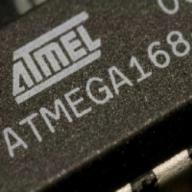I have done an expt by mixing some chemicals
result:
mixture:trichloromethane+ethyl ethanoate
---exothermic
mixture:ethanol+cyclohexane
---endothermic
Explain the observed temp. change on mixing trichloromethane & ethyl ethanoate as well as ethanol & cyclohexane in terms of the interactions between the molecules.
I don't know how to ans it.
interaction between molecules
2006-12-25 10:12 pm
回答 (2)
2006-12-26 2:40 am
✔ 最佳答案
This is an experiment aimed to estimate the strength of hydrogen bonds between molecules (between identical molecules and between different molecules).=====
The first part is to estimate the strength of hydrogen bond between trichloromethane and ethyl ethanoate molecules.
In trichloromethane molecule, the 3 Cl atoms are highly electronegative, and their combined effect of withdrawing electrons is strong. Consequently, the partial positive charge (δ+) on the H atom is high enough to form a hydrogen bond.
In ethyl ethanoate molecule, the O atom in the C=O group withdraws electrons strongly by resonance effect and inductive effect. Therefore, the negative charge (δ-) on the O atom is also high enough to form a hydrogen bond.
Before mixing, trichloromethane molecules are held together by van der Waals forces; while ethyl ethanoate molecules are also held together by van der Waals forces.
After mixing, hydrogen bonds are formed between (the H atom of ) trichloromethane and (the O atom in the C=O group of) ethyl ethanoate molecules.
Hydrogen bonds are stronger than van der Waals forces, and hydrogen bonds (after mixing) thus have lower enthalpies than van der Waals forces (before mixing). The excess enthalpy in mixing is released and thus the process of mixing is exothermic.
=====
The second part is to estimate the strength of hydrogen bond between ethanol molecules.
In pure ethanol, the ethanol molecules are held together by hydrogen bonds. In pure cyclohexane, the cyclohexane molecules are held together by van der Waals forces.
After mixing, the large cyclohexane molecules break the hydrogen bonds between ethanol molecules, and van der Waals forces are newly formed between ethanol and cyclohexane molecules. Since the hydrogen bonds (before mixing) are stronger than the van der Waals forces (after mixing), net energy is absorbed to break the hydrogen bonds. Therefore, the process of mixing is endothermic.
2006-12-26 1:00 am
Obviously you are studying physical chemistry. Phase equilibrium. There are solutions showing +ve deviation from Roult's law and -ve deviation from Roult's law.
mixture:trichloromet hane+ethyl ethanoate
---exothermic
This is a case of -ve deviation from Raoult's law, the attraction force between trichloromet hane and ethyl ethanoate is stronger than that between trichloromet hane and trichloromet hane. It also stronger than that between ethyl ethanoate and ethyl ethanoate.
As stronger intermolecular force is formed, it is exothermic.
mixture:ethanol+cycl ohexane
---endothermic
This is a case of +ve deviation from Raoult's law, the attraction force between ethanol and cycl ohexane is weaker than that between ethanol-ethanol. It also weaker than that between cycl ohexane-cycl ohexane.
As weaker intermolecular force is formed, it is endothermic. It needs energy to break the stronger attraction force.
mixture:trichloromet hane+ethyl ethanoate
---exothermic
This is a case of -ve deviation from Raoult's law, the attraction force between trichloromet hane and ethyl ethanoate is stronger than that between trichloromet hane and trichloromet hane. It also stronger than that between ethyl ethanoate and ethyl ethanoate.
As stronger intermolecular force is formed, it is exothermic.
mixture:ethanol+cycl ohexane
---endothermic
This is a case of +ve deviation from Raoult's law, the attraction force between ethanol and cycl ohexane is weaker than that between ethanol-ethanol. It also weaker than that between cycl ohexane-cycl ohexane.
As weaker intermolecular force is formed, it is endothermic. It needs energy to break the stronger attraction force.
收錄日期: 2021-04-25 16:24:36
原文連結 [永久失效]:
https://hk.answers.yahoo.com/question/index?qid=20061225000051KK01647


